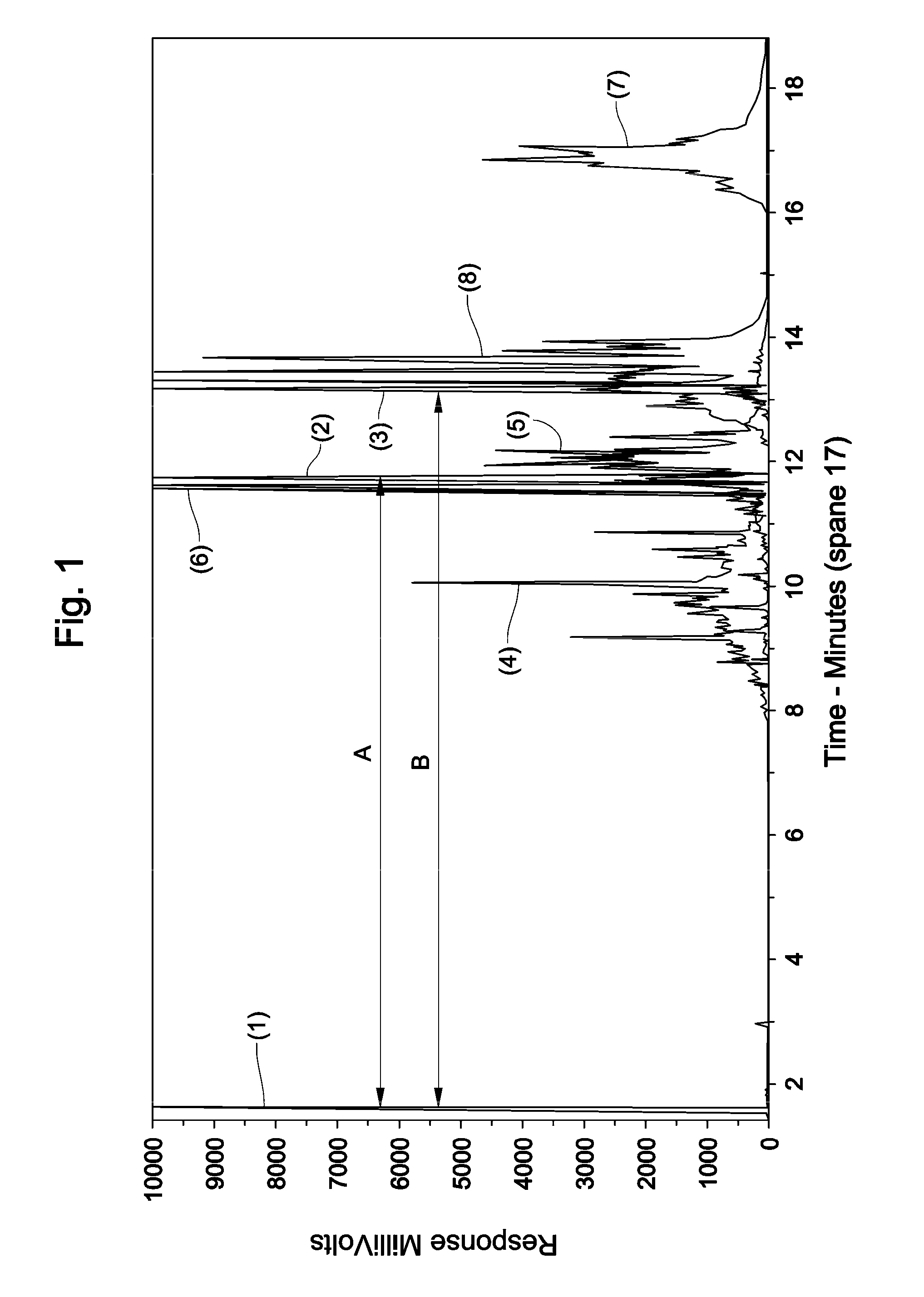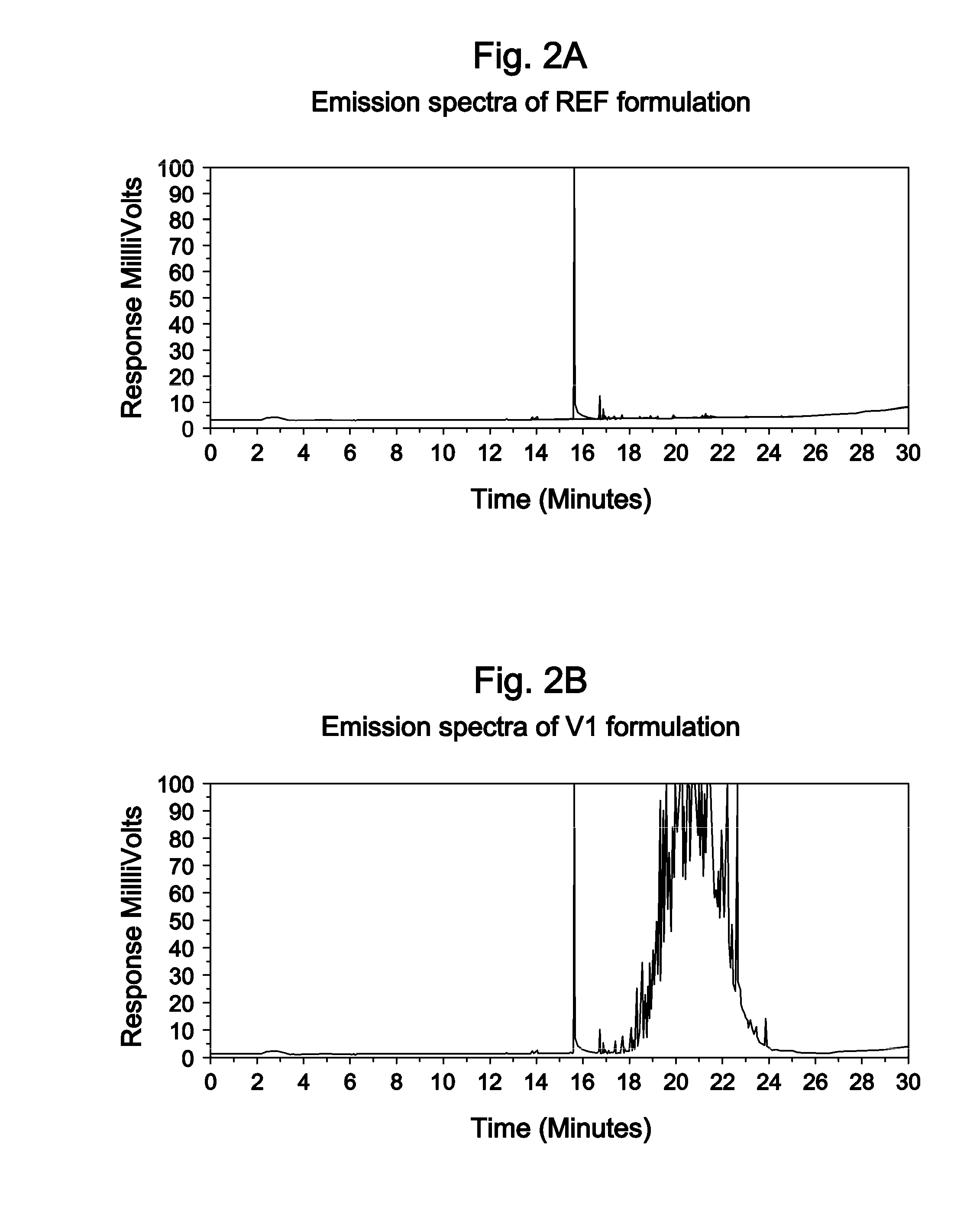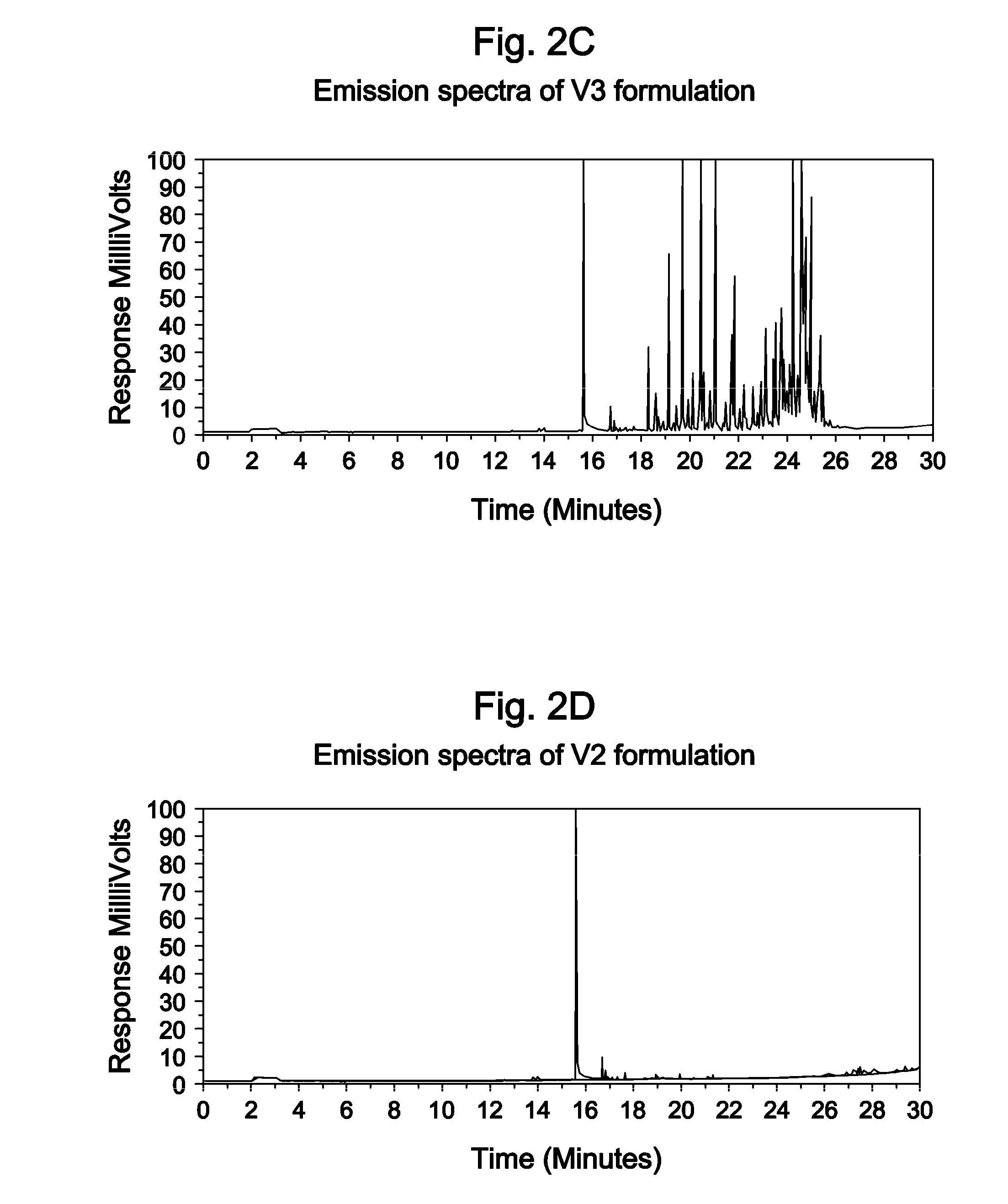Plasticiser Compositions
a technology of polyvinyl chloride and composition, applied in the field of plasticisers, can solve the problems of low flowability of resin, affecting the quality of ambient air, and little if any plasticising effect of polyvinyl chloride formulation, and achieve the effect of visual evaluation of the degree of staining and reducing the volatility of c10 alkyl benzoa
- Summary
- Abstract
- Description
- Claims
- Application Information
AI Technical Summary
Benefits of technology
Problems solved by technology
Method used
Image
Examples
example 1
[0158]The effect on viscosity and gelation of using a C10 alkyl benzoate as a secondary plasticiser was compared with that of using diisobutyl phthalate as the secondary plasticiser and a similar product formulated with no secondary plasticiser. The formulation based on the C10 alkyl benzoate does not contain any viscosity depressants. The formulations were as shown in Table 3.
TABLE 3IngredientsRefT1T2Vestolit P1415 K80808080Vinnolit C66 W202020Jayflex DINP402420Palatinol IC20C10Bz20DDB9Viscobyk 50505Baerostab OM 695222
[0159]The results are shown in FIGS. 3 and 4. The results illustrate that formulation T2, although it contains no viscodepressant, achieves rheology and gelation performances that are similar to the other formulations that contain a viscodepressant.
[0160]The effect was also compared in the formulation shown in Table 4, which contained a filler. Again, the formulation based on the C10 alkyl benzoate does not contain any viscosity depressants.
TABLE 4IngredientsRefT1T2Ve...
example 2
[0162]The relative staining performance of samples made from various plastisols was evaluated and the results are shown in FIG. 7, which designates the samples as F0-F6.
[0163]The formulations used are shown in Table 5.
TABLE 5IngredientsPhrSolvic 380 NS70Vinnolit C100 V30Plasticiser, the amountand nature of whichis shown in FIG. 7Tinstab 2951
[0164]Inspection of FIG. 7 shows that in each case where a staining material has been applied, F6 (according to the invention) exhibits much lower staining than comparison formulations F0-F5. This is readily apparent from the black and white version of FIG. 7 as contained in this specification; and is even more clearly shown in the colour version of FIG. 7, not contained in this specification. The improvement derived from use of C10 Bz (F6) is particularly great where the staining material is yellow dye, Pental N50 black marker and Dark tan shoe polish.
[0165]F6 will be noted to contain less total plasticiser than F0-F5, but was selected for compa...
example 3
[0166]The formulations, shown in Table 6, were evaluated for low temperature performance in the Clash and Berg Test and for hardness.
TABLE 6IngredientsE1E2E3E4E5Vinnolit 4472100100100100100DiBP40C10 Bz40Palatinol AH40Jayflex 7740DINP40Tinstab 29511111
[0167]The Clash and Berg results are shown in FIG. 8 and the hardness results are shown in FIG. 9.
PUM
| Property | Measurement | Unit |
|---|---|---|
| Brookfield viscosity | aaaaa | aaaaa |
| temperature | aaaaa | aaaaa |
| temperature | aaaaa | aaaaa |
Abstract
Description
Claims
Application Information
 Login to View More
Login to View More - R&D
- Intellectual Property
- Life Sciences
- Materials
- Tech Scout
- Unparalleled Data Quality
- Higher Quality Content
- 60% Fewer Hallucinations
Browse by: Latest US Patents, China's latest patents, Technical Efficacy Thesaurus, Application Domain, Technology Topic, Popular Technical Reports.
© 2025 PatSnap. All rights reserved.Legal|Privacy policy|Modern Slavery Act Transparency Statement|Sitemap|About US| Contact US: help@patsnap.com



